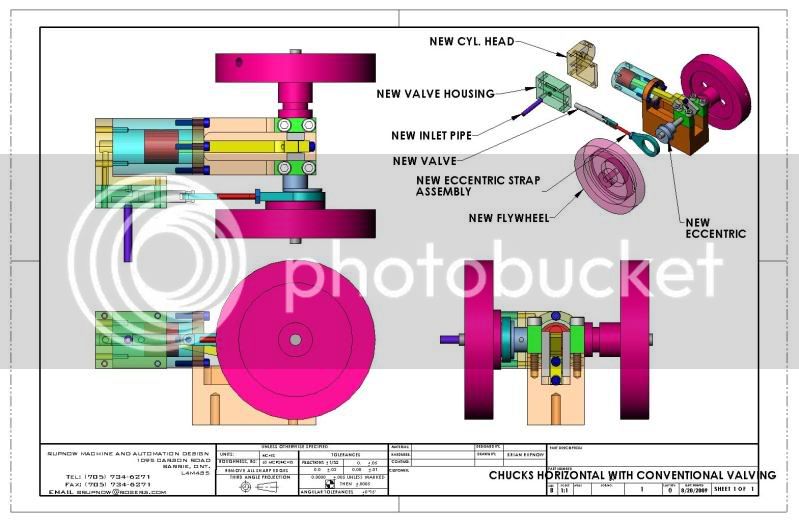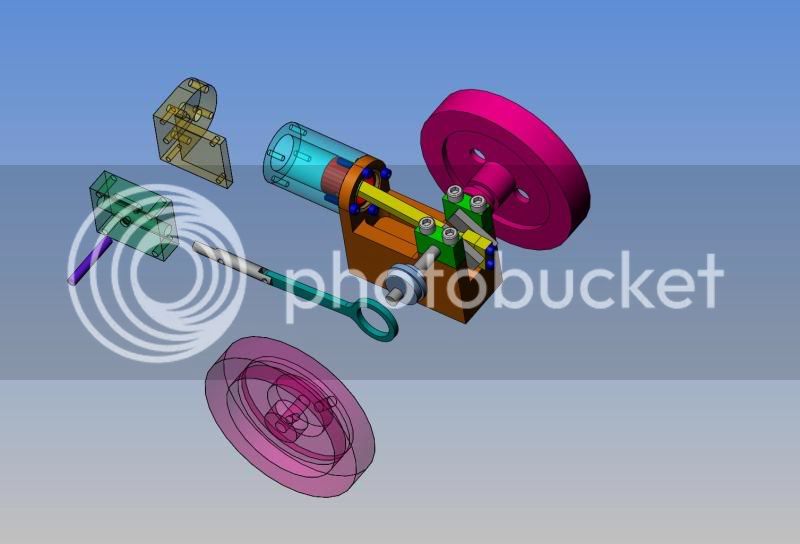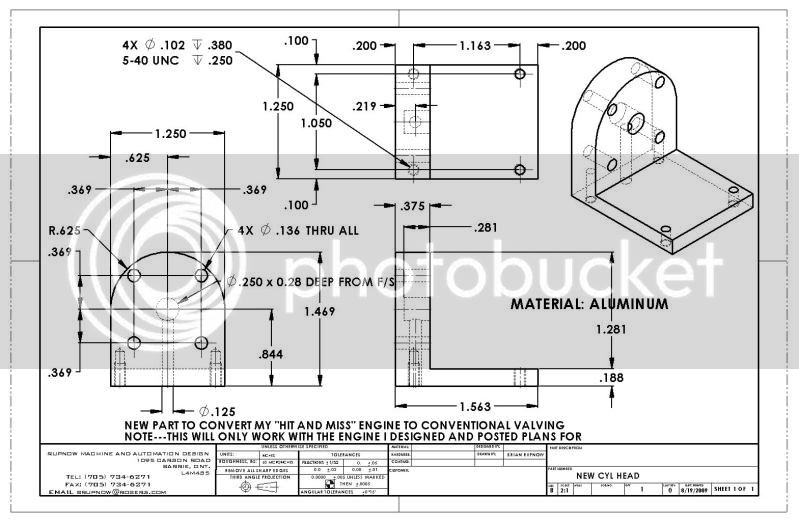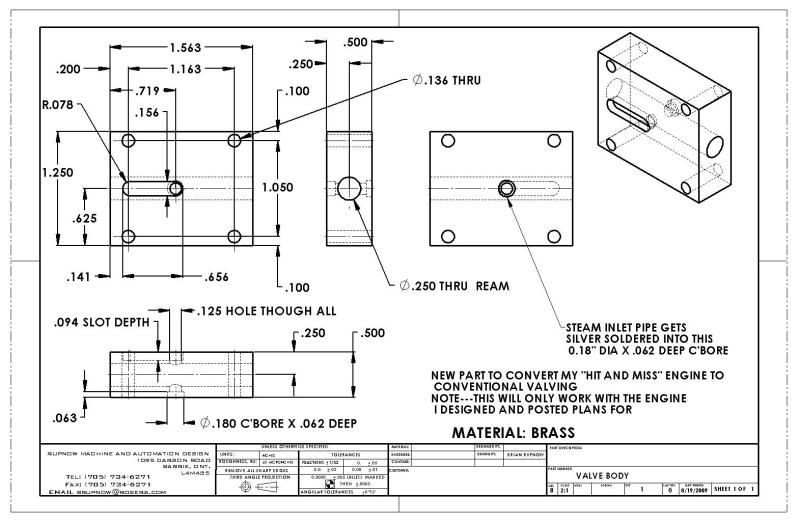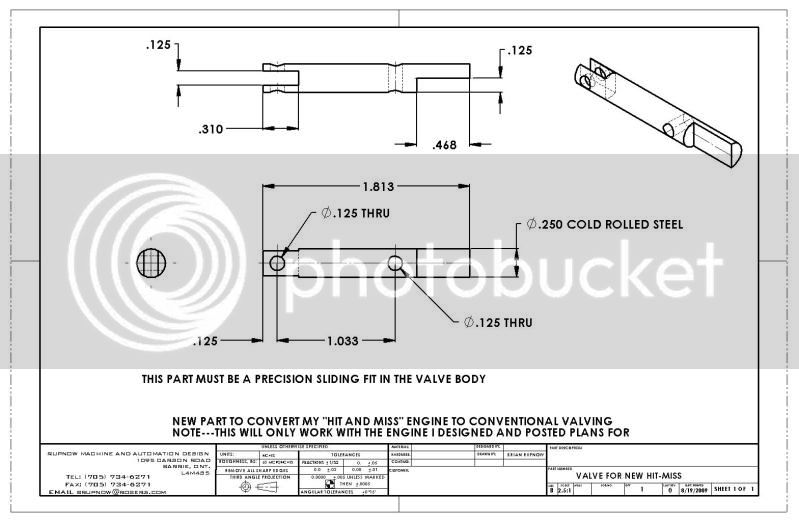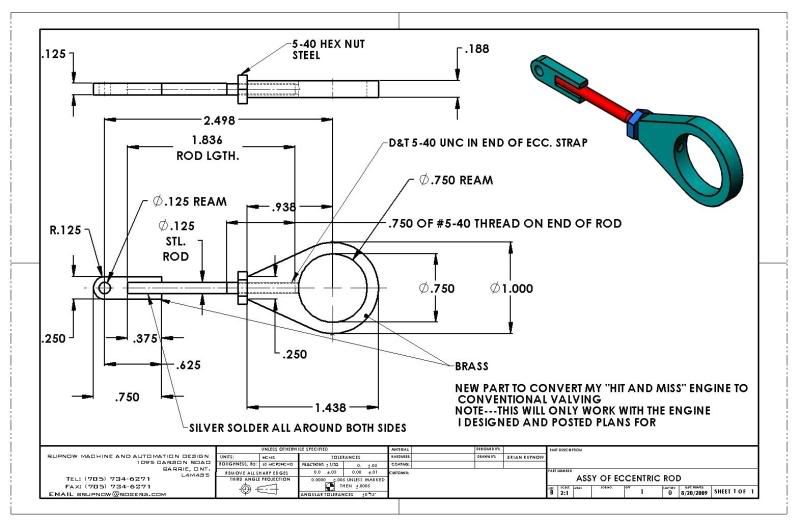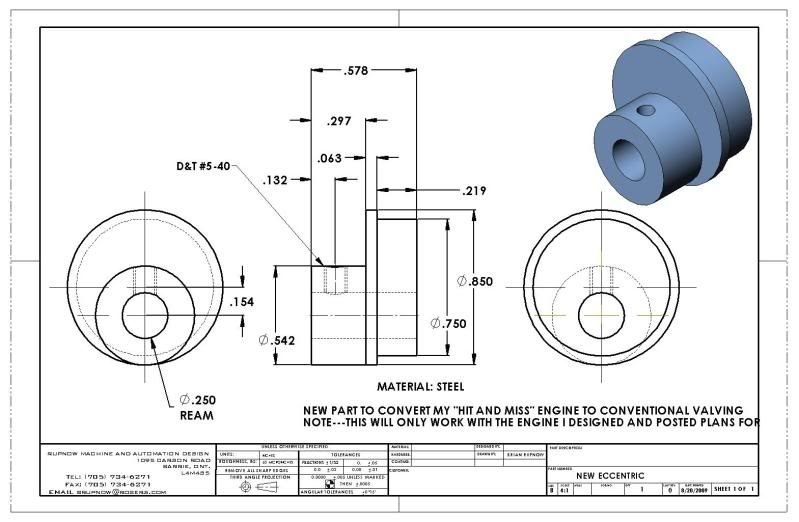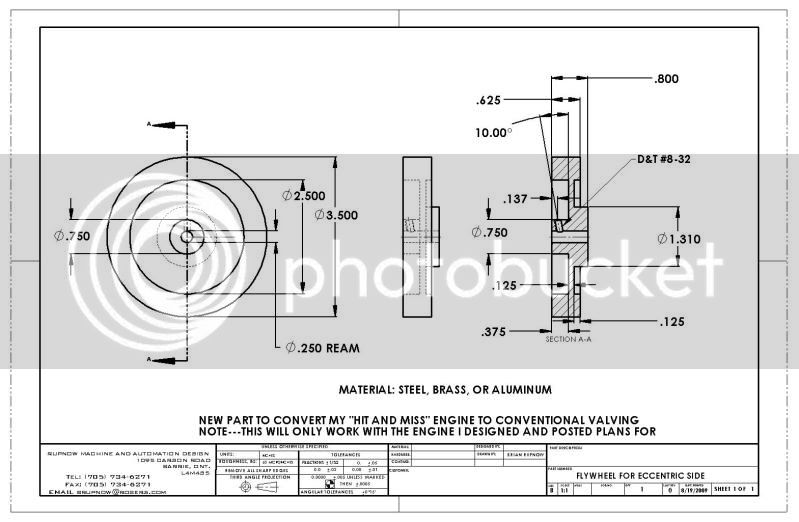

;D ;D
Hi Brian,
Yes I agree valves and valve timing etc can be somewhat confusing at times.
Ok that explains your reasoning and on the face of it has resulted in at least a workable solution, however, I am not quite sure where you latched on to the idea that the eccentric throw had any direct, or indirect, relationship to the crank throw. Perhaps this came from Rudys’ writings but I am not aware of all his work.
One thing is for sure though, that idea is simply not true.
The crank throw only dictates the stroke length of the cylinder and the only possible bearing this would have on the valve gear would be in defining the correct cross sectional area required for the steam/exhaust ports for a given maximum speed of rotation. In this case the stroke length would dictate the maximum velocity of the piston. I.E. a long stroke engine rotating at the same RPM as a short stroke engine would have a much higher piston velocity and this in turn would effect the size of the required steam ports.
The actual formula for port cross sectional area is: -
a = Av/V
Where A = the area of the piston in sq ins.;
v = piston speed, in feet per minute;
V = velocity of flow of steam, in feet per minute.
a = port cross sectional area, in sq. ins.
The values of V commonly used for the steam velocity are 4000 for the EXHAUST and 6000 for the INLET, however, in the case of a slide valve or piston valve, where the same port is used for both Inlet and Exhaust the lower figure of 4000 should be used.
This will determine the required (minimum) cross sectional area for the ports.
Having calculated the required cross sectional area then the actual shape/dimensions of the ports can be determined…. In your case this is a 1/8” dia hole….. in most slide valve engines it would be a more rectangular shape and generally would have a length of between 0.6 and 0.8 x the bore of the cylinder and having a width large enough to achieve the cross sectional are required.
Once this width is determined then the required valve travel can be defined and it is THIS that dictates the THROW required from the eccentric.
To sum this up then, the eccentric throw required for a directly connected valve drive (such as you are using) is dictated solely by the valve travel required to fully open the cylinder port to either STEAM or EXHAUST, which in turn is directly related to the port width in the steam chest.
Sadly this is not the case with the more complex valve gears such as ‘Stephensons’ link etc where several other factors such as die slip and other geometric angularity losses would need to be taken into account, however, they are for another time.
The valve you are using is known as a Line on Line valve having neither LAP nor LEAD and in your case it is an INSIDE ADMISSION valve, since the steam/air is fed into the valve centre chamber.
In this type of valve the lands of the valve piston are exactly the same width as the steam ports…. In your case this is 1/8”.
With the piston at TDC the valve is positioned such that the land covers the port exactly and from this position it would only need to travel 1/8” in either direction in order to either fully open the port to steam or to full exhaust, therefore, the total travel required would be 0.25”….. It can of course be made more, however, it serves no real purpose and only results in additional wear on the valve piston and bore.
This 0.25” is the required total throw from the eccentric, so the offset (eccentric radius), as you know, would be half of this…. In this case it is 1/8” or the same as the steam port width.
The eccentric would be positioned such that the CROWN (high point) of the eccentric is at 90 degrees to the crank and trailing (lagging behind) the crank for the given direction of rotation.
I attach a PDF showing such a piston valve (albeit for a double acting engine) from which you should be able to work out the movement of the valve in relation to the piston/crank angles. Clockwise rotation is shown.
For a single acting engine (as yours) just ignore the right hand cylinder port, the right hand valve land and the inner bore shown on the valve… these are only required for double acting…. And the central groove should be a minimum width of 2 x the port width…. The remainder of the right hand side can be the full solid diameter.
Hope this is of some help, but if not, or you need some further input, then just shout.
Best regards.
SandyC ;D ;D

 View attachment Piston Valve Inside admission with no lap or lead (line on line).pdf
View attachment Piston Valve Inside admission with no lap or lead (line on line).pdf